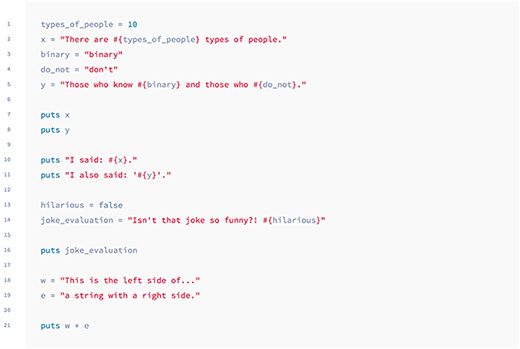
Sergey Nivens - Fotolia
Learn Ruby language skills with these online resources
Systems administrators spend more time programming than ever before. To excel in your current role or find a new, DevOps-heavy one, invest the time to learn a new language.
Everybody in modern IT operations should know how to write scripts. If you're a scripting beginner, make it a priority for the next step of your career.
The Ruby language is easy to use for IT scripting. It is the basis for configuration management tools, such as Capistrano, as well as general-purpose automation on various platforms. Developed with the aim to be easily read by a person, it is suitable for admins who have never scripted before.
Ruby language ABCs
Ruby is widely available for many Linux distributions, and this article will focus on Linux-based use. It is as also available for macOS and Windows. The Ruby language must be installed on a machine before you can write scripts with it. Ruby's website, ruby-lang.org, has a web browser-based interactive tutorial sandbox that enables admins to try the language without the commitment of an installation, as well as a 20-minute tutorial to get you up and running.
Once the Ruby language is installed on Linux, open Interactive Ruby Shell via the irb command. This shell is the Ruby language's input window. For example, type puts "Hello World", and the shell will say "Hello World" back to you. To get a thorough grasp of the basic components necessary to write successful code, rely heavily on the Ruby language website's documentation and libraries. The documentation pages are not sufficient resources to make you a fully skilled programmer, though. You haven't yet created a stand-alone script.

To advance your programming capabilities with the Ruby language, read Learn Ruby the Hard Way, a digital textbook with around 52 exercises that range in complexity from simple scripts to building complex web applications. This resource is hands-on and broken into easy-to-consume lessons. If you work through this collection of tutorials and lessons, just a few minutes at a time, you can master Ruby within a couple months.
Now put Ruby on Rails
Once you get comfortable working with the Ruby language, take the next step, and hop onto Rails. Ruby on Rails is a web platform with tools focused on easy web application construction. There are numerous free resources online to learn Rails as well. The Ruby on Rails Tutorial is another digital textbook with a free email course companion. Other resources include Codecademy and Udemy. Given enough time and energy, you can learn to sufficiently navigate Rails in around two months.
In around four months, an admin can attain efficiency in both the Ruby language and the Rails web development platform. By this time next year, you could be an infrastructure developer, IT automation specialist, site reliability engineer or other future-proofed IT title.








